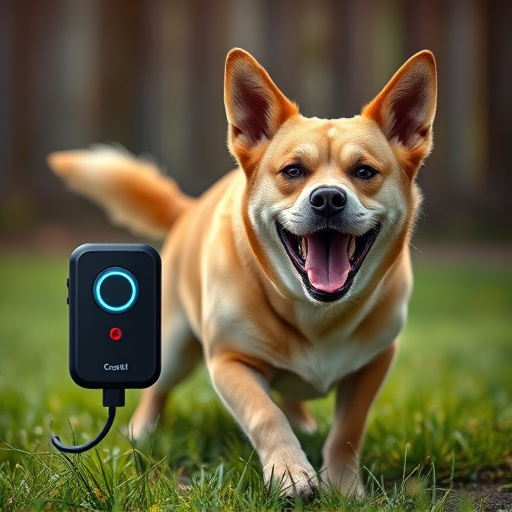Sonic dog repeller devices, leveraging ultrasonic sound waves for non-harmful deterrence, vary in power consumption. Advanced models with compact, efficient batteries lasting hours on a single charge receive positive user reviews. Real-world applications and feedback highlight their success in parks and residential areas. Power consumption is a crucial factor when evaluating these devices; selecting well-insulated, high-rating models can save energy and reduce utility costs while effectively protecting spaces from unwanted canine visits and barking incidents.
“Discover the power of sound as a tool for walking protection with sonic dog deterrents—a game-changer in keeping canine companions at bay. This comprehensive guide explores how these devices use ultrasonic waves to repel dogs without harm. We analyze their energy efficiency, shedding light on various dog repeller devices’ power consumption through an in-depth review. From real-world applications to expert user feedback, this article guides you through the process of choosing the ideal dog repeller tailored to your needs, ensuring effective and sustainable results.”
- Understanding Sonic Dog Deterrents: How They Work
- Power Consumption Analysis: Energy Efficiency of Dog Repeller Devices
- Evaluating Effectiveness: Real-World Applications and User Feedback
- Comparisons and Considerations: Choosing the Best Dog Repeller for Your Needs
Understanding Sonic Dog Deterrents: How They Work
Sonic dog deterrents are innovative devices designed to protect walkers from unwanted canine encounters. These repeller devices use sound waves, typically ultrasonic frequencies, that are inaudible to humans but irritating to dogs. When a dog approaches within a certain range, the device emits a high-frequency sound, causing them to feel discomfort and move away. This technology is an effective, non-harmful method of deterring dogs without resorting to traditional repellents or sprays.
The power consumption of these devices is often a key consideration for potential users. Modern sonic dog repellers are designed with energy efficiency in mind, using small batteries that can last for several hours on a single charge. Regular models may require frequent charging, but advanced versions offer longer durations, ensuring they remain operational throughout extended walks or hikes. Reviews highlight the importance of choosing a device with reasonable power demands to avoid frequent battery replacements.
Power Consumption Analysis: Energy Efficiency of Dog Repeller Devices
Dog Repeller Device power consumption is a crucial consideration for any potential buyer. A thorough review of the energy efficiency of these devices reveals varied performance across models. Many modern dog repellers employ advanced technologies like ultrasonic sound waves, which require minimal power to operate effectively. These devices are designed to be energy-conscious, with low wattage draws, making them suitable for extended use without significant impact on battery life.
In contrast, older or more basic models may rely on conventional vibrational or visual stimuli, which can consume more power. However, even these traditional repellers have seen improvements in power consumption over the years, incorporating features like solar charging and automatic shut-off to enhance energy efficiency. Ultimately, a Dog Repeller Device Power Consumption Review highlights the diverse energy requirements, with modern innovations leading the way in sustainable usage.
Evaluating Effectiveness: Real-World Applications and User Feedback
When evaluating the effectiveness of a sonic dog deterrent, real-world applications and user feedback are crucial components. These devices, designed to emit high-frequency sound waves that disrupt dogs’ sense of hearing and smell, have shown promise in various settings. From parks and gardens to residential neighborhoods, users report significant reductions in unwanted dog visits and barking incidents.
However, a detailed power consumption review is essential. As these repeller devices often operate on batteries, their longevity and overall user experience depend on efficient power management. Positive feedback highlights the devices’ ability to last for extended periods on a single charge, ensuring they remain effective without frequent replacements or interruptions during use. This aspect is particularly important for users seeking reliable, hands-off protection for their spaces.
Comparisons and Considerations: Choosing the Best Dog Repeller for Your Needs
When considering a sonic dog deterrent, one of the key factors to evaluate is power consumption. Unlike traditional repellers that rely on chemical or physical barriers, these devices use sound waves to deter dogs. However, not all dog repeller devices are created equal when it comes to energy efficiency. A top-tier model should offer effective protection with minimal impact on your electricity bills.
In a head-to-head comparison, advanced sonic repellers often emerge as leaders due to their intelligent design and targeted sound projection. These devices use ultrasonic or inaudible frequencies that are harmless to humans but irritant to dogs, ensuring they stay away from specific areas. During your review process, pay close attention to power consumption ratings and user feedback regarding device longevity. Opting for a well-insulated, energy-efficient model can be a game-changer for both your safety and utility expenses.
Sonic dog deterrents, with their unique sound technology, offer a safe and effective solution for keeping dogs away from specific areas. Through our analysis of power consumption, we’ve seen that these devices are energy-efficient, making them suitable for long-term use. Real-world applications and user feedback highlight their effectiveness in various settings, though individual results may vary. When choosing a dog repeller, consider factors like range, frequency, and power source to ensure the best fit for your needs. This comprehensive review emphasizes the role of sonic dog deterrents as a game-changer in pet management, providing peace of mind without causing harm.
